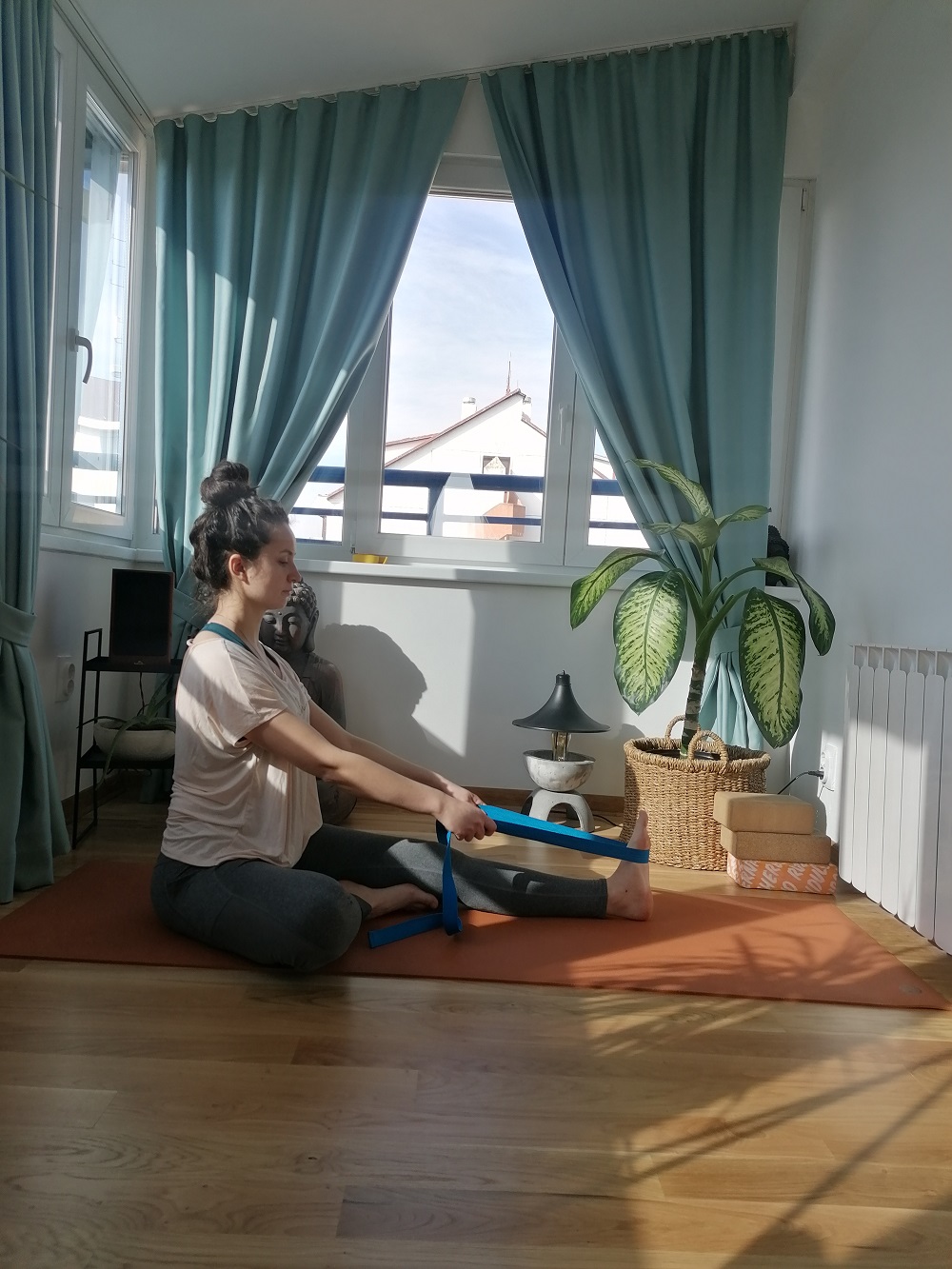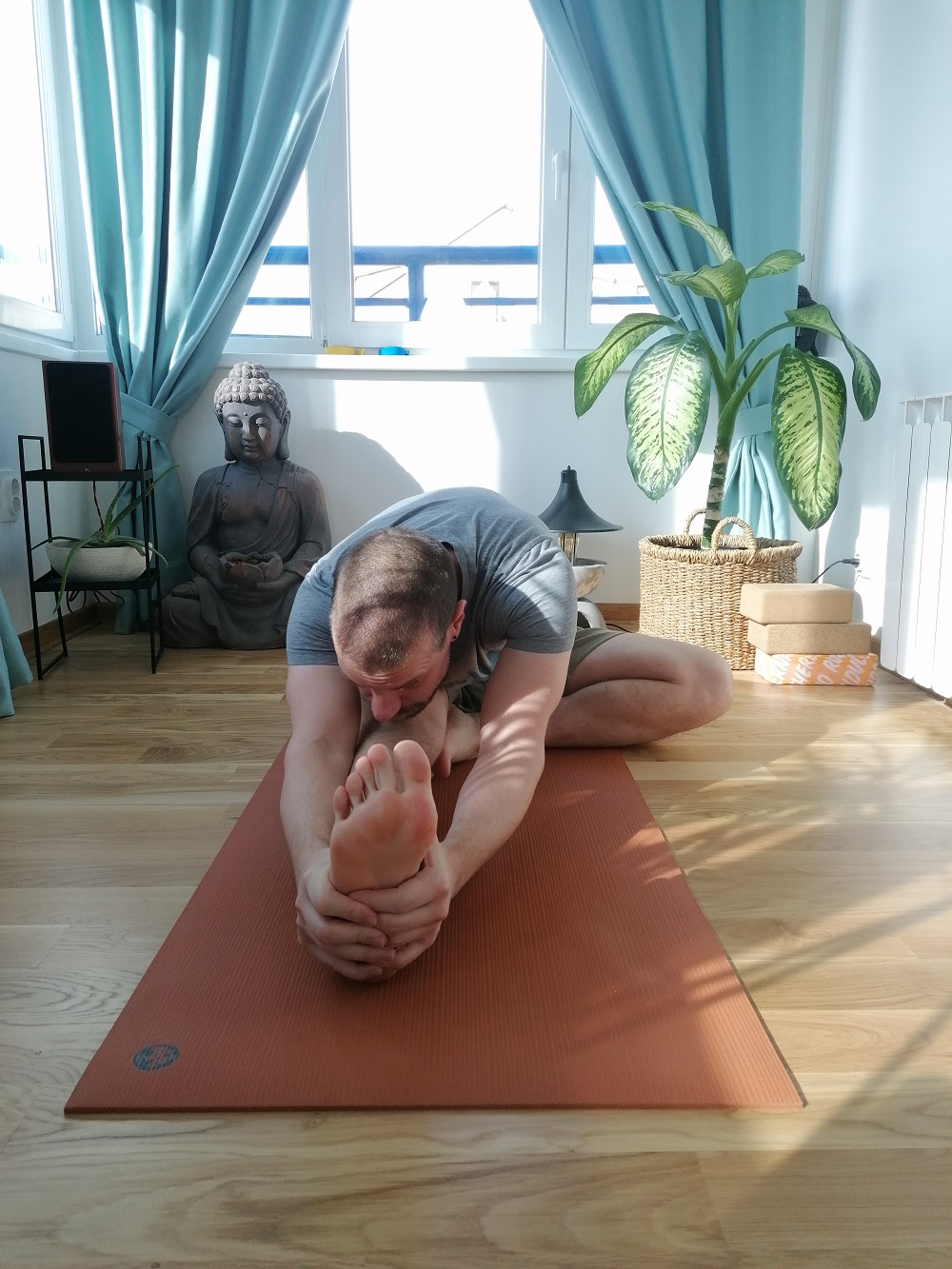Known for its remarkable advantages, Janu Sirsasana is a seated forward bend. It is one of the most important postures in yoga and can be practiced by people of all ages and abilities. If you’re looking for an asana that is energizing and calming, this is the posture you definitely don’t want to miss!
This pose has a variety of miraculous benefits, including improved circulation, increased flexibility, and strengthened muscles. It’s also known to help relieve stress and tension headaches. But let’s hold our horses because we will start with the fundamentals of Janu Sirsasana. We’ll explore the benefits in detail and provide a step-by-step guide to performing it correctly.
Head on Knee Pose (Janu Sirsasana): The Fundamentals
The seated forward bend, known as Janu Sirsasana, stretches the spine, shoulders, and hamstrings. The Sanskrit name of this asana is derived from two words: “Janu,” meaning knee, and “Sirsa,” meaning head. The English name “Head on Knee Pose” gives a pretty good idea of how this posture looks. We’ll paint this picture in the later section of this article. However, as the name suggests, you bring your head closer to your knees in this posture.
This asana is often practiced as part of a sequence known as the Primary Series or Yoga Chikitsa. The Primary Series is a set of postures designed to purify and cleanse the body. Janu Sirsasana is usually practiced after Sukhasana (easy pose) and before Paschimottanasana (seated forward bend).
Regarding anatomy, Janu Sirsasana works on your core, lower back, gluteus, hamstrings, neck, and hips. With this, you can ascertain how beneficial this posture is for your overall health. Additionally, it is known to activate several chakras, including the Solar Plexus, the Root Chakra (Muladhara Chakra), and the Sacral Chakra (Swadisthana Chakra) and the Solar Plexus Chakra(Manipura Chakra).
For people with good flexibility, Janu Sirsasana is a beginner-level pose, but for complete novices, it falls under the intermediate-level pose category. However, with regular practice, you can master this posture and experience all its benefits.
History and Origin of Janu Sirsasana
Like all yoga postures, the origins of Janu Sirsasana can be traced back to ancient India, at least the fundamentals. Although this pose is relatively new, as it came into practice in the 20th century, it’s mentioned in Krishnamacharya’s 1934 Yoga Makaranda.
Benefits of Practicing Janu Sirsasana
Janu Sirsasana is an asana that is known for its miraculous benefits. Let’s explore several of the most notable benefits of practicing this posture in detail:
Improved Circulation
Janu Sirsasana helps to improve circulation by lengthening the spine. Because of the increased space between the vertebrae, the spinal cord can get more blood. Improved circulation is essential for overall health as it helps deliver oxygen and nutrients to the body’s various organs.
Increased Flexibility
Janu Sirsasana is an excellent posture for increasing flexibility. It collectively works on stretching various parts, such as the spine, shoulders, and hamstrings, expanding the range of motion. Your flexibility will significantly improve with consistent practice.
Enhanced Muscles
In particular, the core and lower back muscles benefit from this posture’s muscle-strengthening effects. As we briefly touched upon the anatomy, Janu Sirsasana works on multiple muscle groups. It contributes to toning and strengthening these muscles, which improves general health. Plus, it tones the abdominal muscles and helps to improve posture.
Facilitates Hormonal Balance
Janu Sirsasana is known to help facilitate hormonal balance. When you perform this posture, it stimulates organs like the pancreas, kidney, spleen, liver, and uterus. These organs are responsible for producing hormones, and by stimulating them, this posture helps to maintain a hormonal balance in the body.
Stimulates Multiple Chakras
As we briefly mentioned, Janu Sirsasana stimulates multiple chakras. The three primary chakras that are activated by this position are the Solar Plexus (Manipura Chakra), the Root Chakra (Muladhara Chakra), and the Sacral Chakra (Swadisthana Chakra). These chakras are responsible for improving your sense of stability, creative expression, and self-esteem. This posture helps improve overall health and well-being by stimulating these chakras.
Aids in Relieving Mental Disorders
Another benefit of Janu Sirsasana is its effectiveness in treating mental illnesses like anxiety and depression. Since you stretch the body in this posture, it helps to release tension from the mind and body. This might not cure mental disorders, but it can alleviate the symptoms.
Improves Digestive System
Since it’s a forward bending posture, Janu Sirsasana helps improve the functioning of the digestive system. It massages the abdominal organs and stimulates them, which leads to better digestion. Constipation and other digestive issues are also relieved by performing this posture.
How To Perform Janu Sirsasana (Head on Knee Pose) Correctly
After looking at the many advantages of Janu Sirsasana, let’s understand how to perform this position correctly. Performing this posture can be a little challenging, but if you follow the instructions properly, you can do it easily.Here’s a step-by-step guide to performing Janu Sirsasana:
- Sit on the floor with your legs stretched out in front of you. Make sure that your spine is straight and your shoulders are relaxed.
- Bring your right heel up to your perineum while bending your right knee.
- Slowly start to hinge forward from the hip joint and bring your forehead closer to your right knee.
- Remember to keep your spine straight. You can place your hands on the floor in front of you for support.
- Repeat on the opposite side after holding the position for 30 to 60 seconds.
Contradictions of Janu Sirsasana
Like all yoga postures, you should be aware of certain contradictions of Janu Sirsasana before practicing it. Performing Janu Sirsasana is not recommended for people dealing with the following conditions:
- Disc herniation
- Serious back injuries
- Pregnancy
- High blood pressure
- Glaucoma or other eye diseases
If you have any of these conditions, it’s best to avoid this posture or practice it under the guidance of a trained yoga instructor.
Conclusion
So, this article discussed everything you need to know about Janu Sirsasana. Remember, always practice under the guidance of a trained yoga instructor if you’re new to yoga or have any health concerns. Stay safe and happy practicing!









